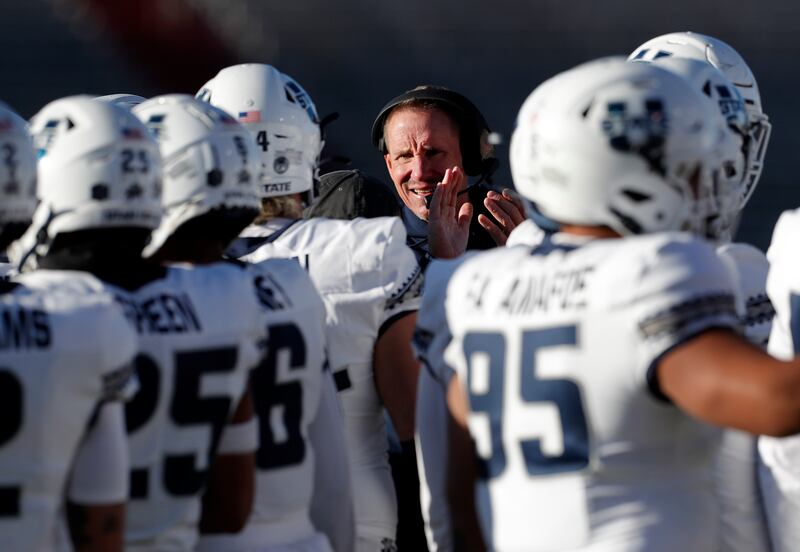LOGAN — The Utah State Aggies have finally made it to fall camp.
Fifty-one days after they were initially scheduled to start practicing for the 2020 season, the Aggies have taken to Merlin Olsen Field in preparation for a year that has already been unlike any other.
First, spring football was canceled. Then fall camp was pushed back. Then the entire fall season was indefinitely postponed. With the return of college football, though, things are getting back to normal.
Sort of.
There is of course the ever-present danger that games — USU is slated for an eight-game conference-only season — will be canceled. You can thank COVID-19 for that. Mountain West Conference commissioner Craig Thompson certainly doesn’t expect the season to play out the way it does on paper, nor does practically anyone else.
“I fully anticipate that not all 12 (MWC) institutions will play all eight games, based off what we have seen,” said Thompson.
But the Aggies are playing football this season. There will be football at Maverik Stadium in 2020. With that in mind, here are five of the most compelling storylines to watch as camp unfolds:
Is there a quarterback competition anymore?
From the moment Jordan Love announced that he would forgo his senior season at USU and declare for the NFL draft (he was selected in the first round of the 2020 draft by the Green Bay Packers), the Aggies’ starting quarterback job, and who would win it, became a major topic of discussion.
Between Henry Colombi, Andrew Peasley, Cooper Legas and Josh Calvin, the Aggies had four capable signal callers, two of whom — Colombi and Peasley — appeared to be ahead of the rest due to their game day experience.
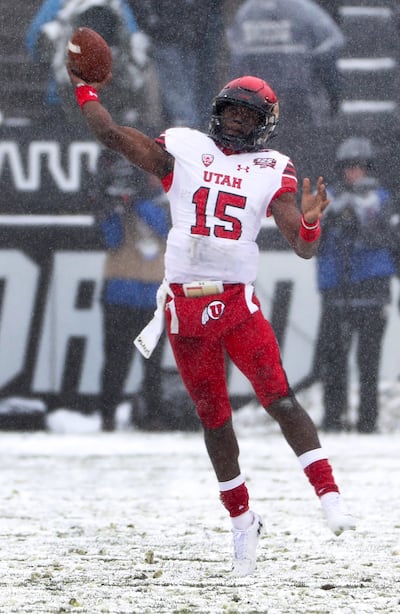
Colombi was viewed as the front-runner, the presumed heir apparent to Love, and that remained the case throughout the spring and most of the summer. That is until July 13, when the Aggies announced that former Utah quarterback Jason Shelley had transferred to USU.
Just two days later, reports surfaced that Colombi had entered the transfer portal and five days after that it was announced that he was headed to Texas Tech, where he was reunited with former USU head coach Matt Wells.
In a week’s time, the Aggies’ starting quarterback gig appeared to have gone from all but decided to completely wide open to basically closed again.
That isn’t exactly the case heading into fall camp, though. Shelley transferred to Utah State without any guarantees, according to his mother, Janine Shelley, which Andersen subsequently confirmed in an interview with the Deseret News.
And while expectations are that Shelley will win the starting job — per Shelley, the Aggies’ attack under offensive coordinator Bodie Reeder is eerily similar to that which he ran at Lone Star High School in Frisco, Texas, where he threw for 2,975 yards and 24 touchdowns, and rushed 180 times for 629 yards and 20 touchdowns as a senior — Peasley may well give him a run for his money.
“Andrew has been in this program for a number of years,” said Andersen. “Has he been the second team quarterback, a guy who competed for the starting job? With Jordan (Love) here, no, he hasn’t done that. He has done a tremendous job being prepared, though. He understands why Jason is here, but he wants to play. Cooper Legas wants to play and Josh Calvin wants to play. The opportunity is there for those kids.”
Do the Aggies have enough depth at running back?
Shelley wasn’t the only former Ute to transfer to Utah State over the summer. He wasn’t even the latest. Former Utah running back Devonta’e Henry-Cole officially transferred to USU on July 29, after initially choosing BYU following his decision to leave the U.
That initial decision to leave Utah came on Feb. 1 and per Andersen, the Aggies aggressively pursued Henry-Cole the moment he first entered the transfer portal. The reason behind USU’s interest was simple: The Aggies needed both playmakers and depth at the running back position.
“We would like to find another running back. That would be key for us,” Andersen said following National Signing Day in February. “Potentially a grad transfer.”
Henry-Cole’s arrival provides a significant boost to the Aggies’ running back corps, which — aside from the proven Jaylen Warren — is young, inexperienced and completely untested.
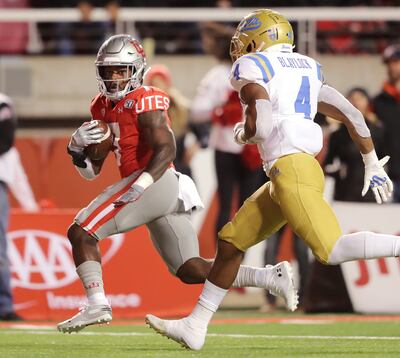
“We recruited him like crazy,” Andersen said of Henry-Cole. “We got him here as soon as we could. We think he is a special player and a great fit, and we were looking for a running back. We had Jaylen coming back and no one is happier that DHC is here than Jaylen Warren, because you have to have three good running backs if you are going to take a run at this thing.”
Who the third back will be remains in question and will need to be decided during fall camp. The frontrunners currently are a pair of true freshmen: John Gentry and Elelyon Noa.
On paper, Gentry has a slight edge over Noa, if only due to his versatility. A three-star recruit and former Utah and Arkansas commit, Gentry earned first-team all-district honors at North Shore High (Texas) as a senior while playing wide receiver (he had 18 receptions and 10 touchdowns). As a junior in 2018, playing primarily running back, he rushed for over 900 yards and 24 touchdowns.
Noa, for his part, was a record-breaking back in high school at Helix High (California). As a junior in 2018, he carried the ball 202 times for 2,326 yards and 25 touchdowns. While his senior season was marred by a foot injury (he was limited to 126 carries for 1,085 yards and 11 touchdowns) Noa broke the career rushing yardage record at Helix, which was previously held by USC standout Reggie Bush.
Whether the third back ends up being Gentry or Noa, or someone else entirely, is less important at this point, though. More important is that the Aggies have three quality running backs.
“To have a really good team you have to have three quality backs,” said Andersen. “And hopefully one or two that are special.”
Will transfers from Power Five programs like ASU, UCLA and USC live up to the hype?
Utah State hasn’t limited offseason arrivals to just former Utes. The Aggies have also welcomed former UCLA defensive end Marcus Moore and former USC safety C.J. Pollard into the fold. Throw in former ASU cornerback Terin Adams, who joined the program ahead of fall camp in 2019, only to suffer a debilitating broken hand that limited him all year, and the Aggies boast more than a few players who once called the Power Five home.
Given the success that former Power Five athletes have had at Utah State in recent years, whether it be former USC wide receiver Jalen Greene in 2018, or the trio of former Utes — Siaosi Mariner, Caleb Repp and Nick Heninger — who arrived last season, expectations are high for Moore, Pollard and Adams heading into the season.
And they should be, said Andersen.
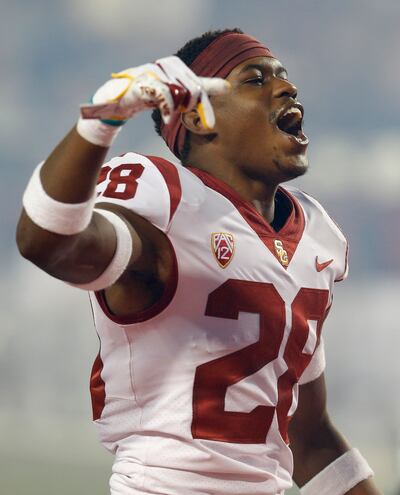
“If you take a transfer, you are taking him to come in and play,” he explained. “If he doesn’t come in and become a major contributor, then we’ve made a mistake as coaches, the kid made a mistake coming here and the recruiting guys made a mistake allowing him to be recruited by us in the first place.
“They have to come in and have an opportunity. That is our expectation and the expectation of each of those young men.”
All three — Adams, Moore and Pollard — are in a position to contribute immediately. Adams is healthy at last and will battle with the likes of Cam Lampkin and Andre Grayson for one of the starting cornerback jobs. Moore, meanwhile, is expected to become a starter along the Aggies’ defensive line, as an edge rusher opposite Justus Te’i.
As for Pollard, described by co-defensive coordinator Frank Maile as a “talented, long, limber and explosive kid,” he is supposed to compete against Jared Reed for a starting safety position, alongside Shaq Bond.
Adams, Moore and Pollard each profess a real comfort level with the Aggies’ defensive scheme — Moore compared it to what the Bruins ran while he was at UCLA — but due to the lack of spring football, fall camp will focus on bringing them and the rest of the program up to speed on new schemes.
“We missed the majority of spring ball. We are still going to be teaching these guys a lot of the schemes that myself and Coach Maile and Coach Collins were going to try to put in this spring,” explained Reeder.
Will the Aggies who’ve made position changes be ready in their new roles?
When Stacy Collins and Frank Maile were named co-defensive coordinators this winter, one of their first acts was to shuffle the USU defense around. Not just in terms of scheme, which they did do, moving the Aggies from primarily a 4-3 scheme to a 3-4, but also specific players.
Defensive end Nick Heninger moved to linebacker. Safety Troy Lefeged Jr. moved primarily to nickel back. Safety Cash Gilliam became a linebacker and nickel back Andre Grayson shifted to cornerback. Elijah Shelton and AJ Vongphachanh moved from their edge rusher positions back to linebacker. The list goes on and on.
The reasons behind the many changes were varied, though ultimately it came down to a desire to get the Aggies’ best players on the field at the same time.
“We moved some guys around a bit to make sure our best 11 are always playing,” Collins told the Deseret News in April. “We want to mix things up.”
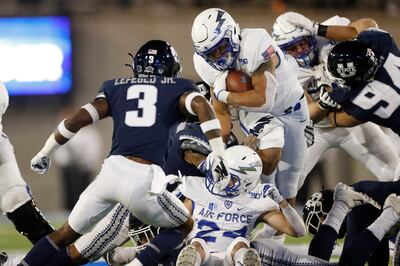
For some, the position changes were return to their norm. That was the case for Heninger, who grew up playing outside linebacker, only to shift to defensive end at the University of Utah. The switch back to linebacker is a welcome one.
“I feel like I am able to be an athlete again,” he told the Deseret News in July. “Not to say that I ever wasn’t an athlete, but I love playing in open space, playing both run and pass. As a D-lineman, I missed that. I missed dropping into coverage. I did that a little bit, but not as much as I used to, and I really missed that.”
Grayson also welcomed the return to a position he played in high school.
“I’ll play some nickel still, situational-type things, but mostly I’ll be playing cornerback. It is a homecoming,” he said. “I love nickel a lot. You get to make a lot of plays. At heart though, I am a corner. Technique-wise, situational-wise, I feel like I am smarter at corner. I am happy to be back there.”
For Lefeged, the shift was made with his professional future in mind.
“If he has aspirations to continue to play football after this next season, which he does, that is where he needs to be,” Andersen explained in March.
Without the benefit of a spring camp, though, many if not all those who underwent position changes will be forced to play catch-up in fall camp.
“I think this is where we as a coaching staff have to do a better job of understanding each of our guys individually,” Collins said. “What are their needs? We have to try to make sure we have done everything we can once this thing gets rolling so those kids are as prepared as they can be.”
Who will replace wide receiver Mariner and tight end Repp?
Mariner and Repp were two of the Aggies’ most valuable players on offense in 2019. The pair of graduate transfers from the University of Utah made an immediate impact upon their arrival in Logan, and Mariner ended up earning second-team all-Mountain West honors after starting in all 13 games and leading the Aggies in every receiving category with 63 passes for 987 yards — good for 15.7 yards per catch and 75.9 yards per game — and 10 touchdowns.
Repp, meanwhile, became the team’s top tight end and had 36 receptions for 455 yards (12.6 ypg) and four touchdowns, tying for second on the team in touchdown catches, while standing in sole possession of fourth in both receptions and receiving yards.
Finding replacements for both players is a point of emphasis for the Aggies heading into camp.
“We lost a nice tight end last year (Caleb Repp) and we have to fill that void, and we have to replace Mariner,” Reeder said in early June.
Doing so is made all the more difficult by the fact that the team’s returners at wide receiver, a group headlined by Savon Scarver, Jordan Nathan and Deven Thompkins, has something to prove themselves.
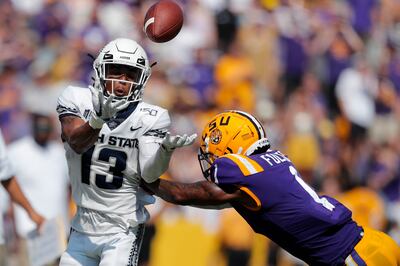
“They have a lot to prove and I think they are working towards that,” Andersen said in March. “We will see, but they need to develop their toughness, physicality and playmaking ability.”
The desire is there to be sure — “I just want to be relied on,” Nathan told the Deseret News in April. “I’m willing to do whatever it takes. I’ll play inside or outside. I want to get more involved on special teams. If I need to block, I’ll do that. I just want to be more dependable for my team.” — but production hasn’t always been.
Much will be laid upon Scarver, an All-American kick returner and Mountain West media’s vote for Preseason Special Teams Player of the Year.
“Savon is going into his senior year,” said Andersen. “He has been tremendous as a kick returner, we all know that. He is one of the best of the best at that, and now he needs to show it at wide receiver. He has been really solid, but now we are expecting him to step up for us.”
Thompkins too is expected to have to take on a larger role, one that takes advantage of his versatility.
Then there is JUCO transfer Justin McGriff, who will replace Mariner at his position, with the hope that he can match the former Aggies production.
“We expect him to step in and be a difference-maker,” Andersen said. “He is expected to jump right into that crew in the fall. ... I like where we are at receiver. All in all, it was a crew that was fairly young last year, but we have four seniors at that position right now and they have a lot to prove.”

